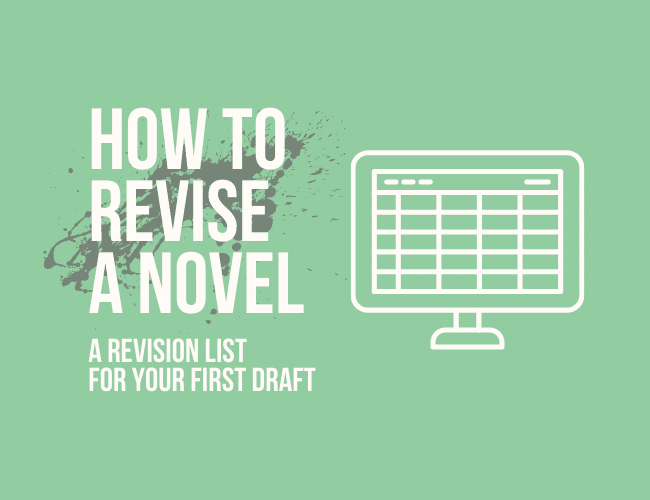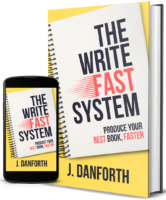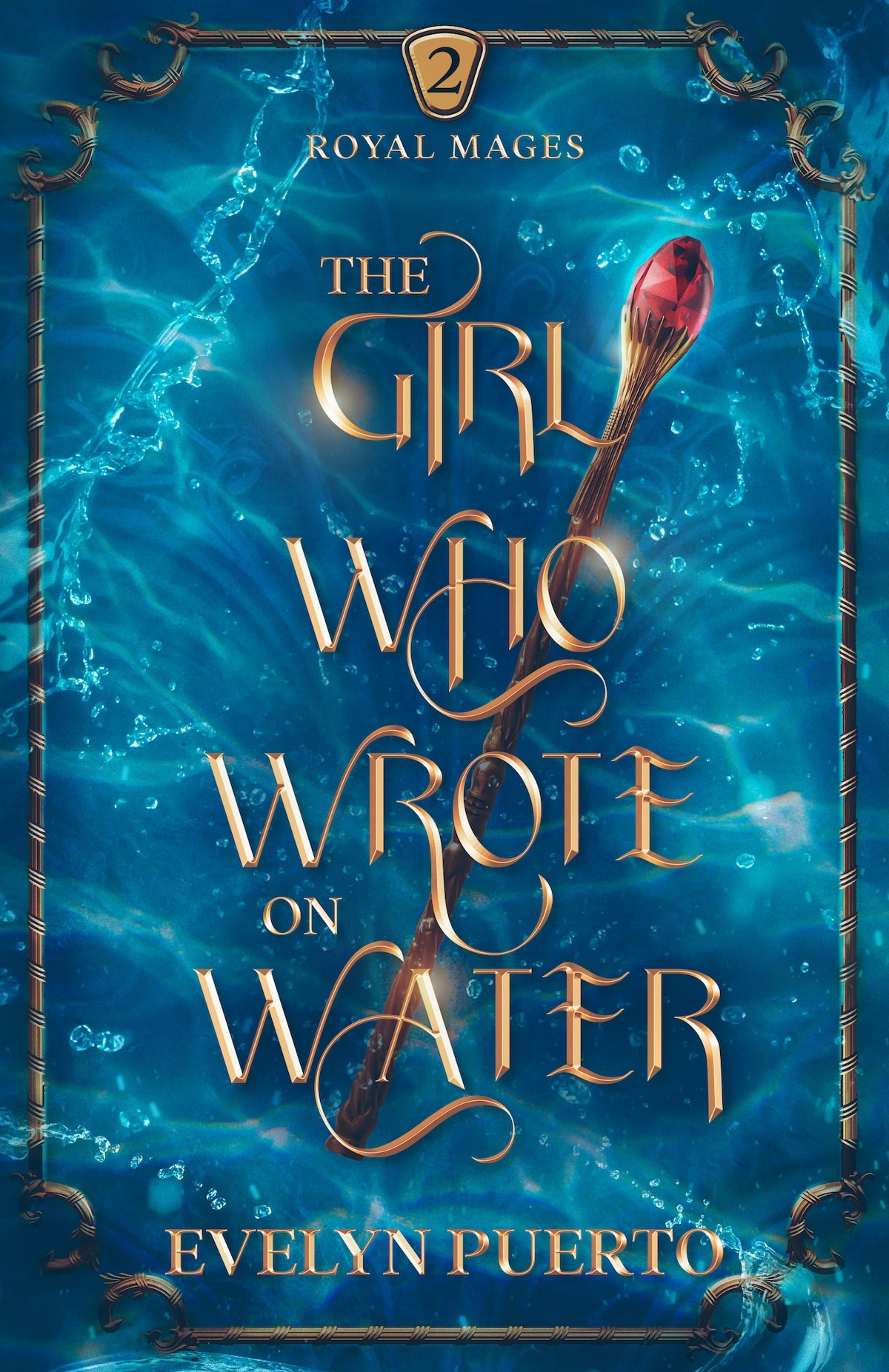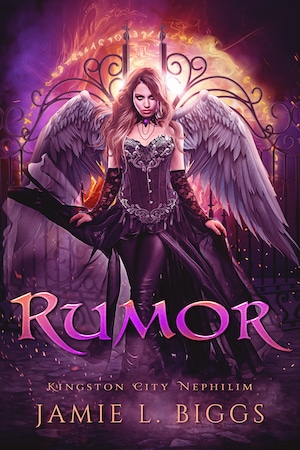Finishing a first draft is a huge deal. If you've just accomplished this, be proud of yourself! At the same time, you might be wondering how to revise a novel after that first draft is done. There's a lot of advice out there.
Which revision tips do you listen to?

The revision process doesn't have to be complicated. However, you might feel—especially if this is your first completed draft ever—intimidated to edit your book.
There are a lot of words and scenes to review. Where do you begin?
In this article, I'd like to share how I took a daunting editing process and created a simplified, concise, and clear strategy to resolve your writing issues and revise your first draft. I do this with what I call a Revision List—a table with five columns that can help you simplify big ideas.
If you're like me, you won't ever want to edit a first draft without it! This article shares some writing tips to help you make your own revision list.
This article is an excerpt from my new book The Write Fast System. It will help you get your book done faster!
 Want to finish your best book faster? Get our new book, The Write Fast System, today (on sale for a limited time)!
Want to finish your best book faster? Get our new book, The Write Fast System, today (on sale for a limited time)!Get The Write Fast System – $2.99 »
How I Came to Use a Revision List
I’ve always been a very “stream of consciousness” person when it comes to writing. When immersed in a writing project, I often find myself drifting in and out of daydreams throughout the day, at night, while driving, in the shower, etc.
But writing notes in a stream of consciousness led to some problems, mainly because they were in a disorganized jumble.
As a pantser, I ended up forgetting what some of the notes were for, or had trouble incorporating them into the story. At the end of the book, I had a stack of notes—some good, some not so good, and some not even applicable.
At the time, I also didn’t believe in writing second drafts—or even the editing phase at all beyond grammatical errors, sentence structure, and typos—so I never ended up using the good ones. Yes, it was a bad habit. Like most of us, I had a lot of bad habits as an amateur writer.
Looking back at that book, I recognize that I didn’t do it justice. Rather than working to improve it using the ideas I came up with, I threw together a single draft and called it done. I self-published this book. It didn’t make it very far, which was no big surprise to anyone.
Some years later, as I sat down to write my science fiction novel Headspace, I found myself falling into this habit once more. I had a scene list to work off, but as the list is only a loose framework, there was still plenty of room for spontaneous development.
My head was filled with ideas, and I once again found myself jotting them down on the last page of my Word document. Within a few days it was threatening to become a disorganized mess once more.
This time, however, I was determined to put my all into this book.
I fully intended to write a second draft and do the book justice.
But I wasn’t going to be able to accomplish that with a messy page of notes. I asked myself what was going to make this revision process easier—specifically, what was going to allow for a better, more smooth transition to the second draft.
And from there, the revision list was born.
5 Columns to Organize a Revision List
The first thing I did when I decided to organize my notes better was to move them to an Excel sheet. I love Excel. Not only does it make sorting and organizing easier, having individual cells pushes you to divide up your information in a more granular manner.
I started out making a simple revision list about items that needed edits in the book.
I quickly realized that if I didn’t make some effort to improve how I tracked these notes, it would be no better than having it in a jumble in the Word document. So, after some thought, I made this Revision List template:

In this screenshot, you can see several notes I made for Headspace. I wrote these down as I wrote the first draft. Instead of editing as I wrote, I simply filled out this sheet every time something occurred to me.
To make searching and filtering easy, I divided the information into the following columns:
- Edit Point: the main thing that needs fixed, basically a summary of what needs changing
- Chapter Number (#): the chapter this change needs to occur in
- Character(s): the characters relevant to the change (when this isn’t relevant to a character, put some sort of marker like “N/A”)
- Type: categorize your changes however you want. I like to stick to the major five (Character, Dialogue, Plot, Setting, and Theme)
- Notes: details on exactly how you want the change implemented and why
With this list in hand, you're ready to start making the actual revision!
How a Revision List Helps You
You might wonder why it’s important to go to such lengths to keep a bunch of scrap notes. The fact is, a revision list is immeasurably helpful when it comes to editing your book.
This list will not only help you finish your first draft fast, but will also help you take your book from an ugly first draft to a beautiful second one.
Why? Because it guides your editing process through your current manuscript. It can work as an organized tool that tracks notes needed for efficient revising.
All of this is important when editing a full length novel, especially when there are a lot of changes needed after a first draft.
Writing Without Editing
It’s tempting to edit as you write. But editing slows us down. It makes us retype, rethink, and re-evaluate.
When you’re trying to get a book written as quickly as possible, editing is a hindrance. What about those ideas that pop up as you write? What if you change your mind about something you wrote a few chapters back? What if you decided you want your hero to be a blond instead of a brunette half way through the book?
Simply jot these things down in your list.
- Hero will be written as blond from Chapter 17 on; change the rest of the book to match.
- Character names in chapter X need to be fixed.
- Use less passive voice in chapter Y's wedding scene.
Now your notes for revision are there for the next draft, and you don’t have to worry about putting a pause on your story to backtrack and edit.
Centralize Your Notes
It’s not uncommon for writers to jot down notes wherever it becomes convenient. I have a habit of writing down inspirations as they come to me in the reminders or notes apps of my phone. Sometimes, I email them to myself. This can easily end in them getting lost.
Since I started using a revisions list, I keep it in an online drive, where I can access it through my phone to add notes. Or, if I can’t do that, I take time to copy the notes into the sheet at the end of the day.
Having a centralized deposit for your notes makes it less likely that you'll lose them.
Filter and Organize
Being able to filter and sort is incredibly helpful. With a properly kept revision list, you’ll be able to quickly find changes for a particular category, about a particular character arc for a main or secondary character, or check to see how many places you want to insert a theme.
You can also use the sort function to group types of changes together so you can peruse them by category in any order you like.
The Revision List: A Birds’ Eye View
“Birds' Eye view” is a phrase I use often because I can’t emphasize enough how important it is to be able to look at your book as a whole. Having all of your edit notes in one place allows you to get a big picture of how your first draft needs to be fixed.
Are most of your notes about one or two characters? Maybe those characters need a major overhaul. Do you have several notes about inserting a particular item in multiple places in the story? Maybe that item should have a bigger role.
By having all your notes in one place, you can spot where the major editing trends are and think about your second draft with much clearer direction. By working off a revision plan, you're also much less likely to have plot holes in your story structure, continuity errors, or weak character development.
That's where my Revision List comes in—and why editing my manuscript has become manageable instead of overwhelming.
I hope it can do the same for you. Good luck!
Do you feel overwhelmed when editing your book? What do you use to revise your first draft? Let me know in the comments.
PRACTICE
Consider your latest draft—assuming it’s not the final one.
Are there some details you’d like fixed? Did you realize certain parts of it didn’t turn out like you hoped? Did you discover some plot points you’d like added?
For today's writing practice, make a list of items you’d like improved in the next draft. Aim for five to ten items to start.
Then, spend fifteen minutes organizing these notes into the same five-column format shown above. Are there columns you’d like added, removed, or changed? No problem. Modify the spreadsheet as you see best.
At the end of the exercise, you should have a good template to start tracking the revisions for your next book, which will go a long way toward that amazing next draft!
When your time is up, share one of your notes for revision in the practice box below, and be sure to comment on three other writers' notes!
J. D. Edwin is a daydreamer and writer of fiction both long and short, usually in soft sci-fi or urban fantasy. Sign up for her newsletter for free articles on the writer life and updates on her novel, find her on Facebook and Twitter (@JDEdwinAuthor), or read one of her many short stories on Short Fiction Break literary magazine.



I completed my first draft. Put it down for a couple of weeks then I read through it and made some notes. I created a spreadsheet, starting with your list above but added more fields. I’m very detailed. Research was a column I added. I also noted if in the book it is a global change or local. i.e. names of characters. By the time I finish, I may end up with more columns. This is my first time writing or editing. Good article to begin editing and what to expect.
So glad it helped! I use this method too. It keeps me from feeling overwhelmed. Good luck as you revise!
This sounds like I must be able to master making and using the spreadsheet. I don’t know how to create a spreadsheet and I find trying to use them is often frustrating. Any other ideas?
Hi Ruchama!
If you don’t like spreadsheets, it could be as simple as a list in a regular word doc or even on paper, with the chapters numbered. It just has to make sense to you—that’s the most important thing. Good luck!
This is so helpful for a first-timer attempting to edit her work. You provided such good advice and I hope I can use it. I like that I can re-visit this page for a refresher.